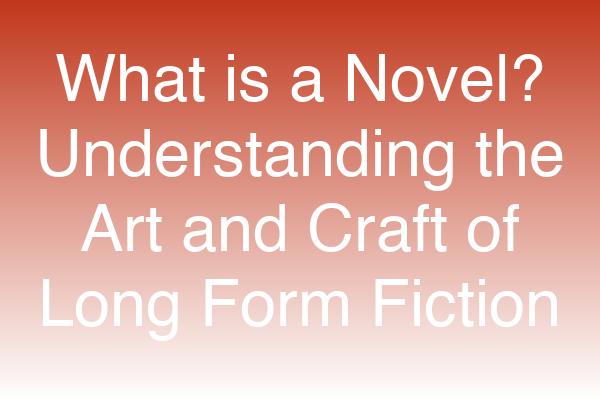
Categories: Literature, Writing, Education
Tags: what is a novel, novel definition, types of novels, novel structure, fiction writing, literary genres
Introduction
Have you ever picked up a book and lost yourself in its pages for hours? That immersive experience is often the hallmark of a well-crafted novel. But what exactly is a novel? In this comprehensive guide, we will explore the definition of a novel, its various forms, and the essential elements that contribute to its enduring appeal. Whether you're an aspiring writer or a curious reader, understanding the intricacies of novels can deepen your appreciation for this literary form.
What is a Novel?
A novel is a long narrative work of fiction that typically explores human experiences through interconnected characters and events. Unlike shorter forms of fiction, such as short stories or novellas, novels allow for more complex plots and character development. The length of a novel usually exceeds 40,000 words, with many contemporary novels reaching upwards of 100,000 words or more.
Key Characteristics of a Novel
- Length: Novels are generally longer than other forms of fiction, providing ample space for plot and character development.
- Complexity: They often feature multiple characters, subplots, and themes, allowing for a rich exploration of ideas.
- Narrative Structure: Novels typically follow a structured format, including exposition, rising action, climax, falling action, and resolution.
- Character Development: A hallmark of a great novel is its ability to develop characters in depth, allowing readers to connect with their journeys.
Types of Novels
Novels come in various genres and styles, each with its unique characteristics. Here are some popular types of novels:
| Type of Novel | Description |
|---|---|
| Literary Fiction | Focuses on character development and thematic depth rather than plot. |
| Mystery/Thriller | Involves suspenseful plots, often centered around crime or intrigue. |
| Science Fiction | Explores futuristic concepts, technology, and alternate realities. |
| Fantasy | Features magical elements and fantastical worlds. |
| Historical Fiction | Set in a specific historical period, blending factual events with fictional narratives. |
| Romance | Centers on romantic relationships, often with emotional and dramatic elements. |
| Young Adult (YA) | Targets a teenage audience, addressing themes relevant to young adults. |
The Structure of a Novel
Understanding the structure of a novel is crucial for both readers and writers. A typical novel is divided into several components:
- Exposition: Introduces characters, setting, and the initial situation.
- Rising Action: Develops the story through conflicts and complications.
- Climax: The turning point of the story, where tensions peak.
- Falling Action: Events that follow the climax, leading towards resolution.
- Resolution: Concludes the story, resolving conflicts and tying up loose ends.
Expert Insights
To gain a deeper understanding of novels, we reached out to two literary experts:
"A novel is not just a story; it's a journey into the human experience, allowing readers to explore different perspectives and emotions." — Dr. Emily Carter, Literary Scholar.
"The beauty of a novel lies in its ability to create a world where readers can escape, learn, and grow through the lives of its characters." — Mark Thompson, Author and Writing Coach.
Why Novels Matter
Novels play a significant role in culture and society. They not only entertain but also provoke thought, inspire change, and foster empathy. Here are some reasons why novels are important:
- Cultural Reflection: Novels often reflect societal values, challenges, and changes.
- Emotional Connection: They allow readers to experience emotions and situations outside their own lives.
- Critical Thinking: Engaging with complex narratives encourages readers to think critically about various issues.
Common Questions About Novels
What is the difference between a novel and a novella?
- A novella is a shorter form of fiction, typically between 20,000 to 40,000 words, focusing on a single theme or character.
Can a novel be based on true events?
- Yes, many novels are inspired by real-life events or figures, blending fact and fiction.
What are some famous novels that everyone should read?
- Classics like "Pride and Prejudice" by Jane Austen, "1984" by George Orwell, and contemporary works like "The Night Circus" by Erin Morgenstern are highly recommended.
Visual Content Suggestions
- Infographic: Create an infographic illustrating the structure of a novel, including key components and their functions.
- Book Cover Gallery: Showcase famous novel covers to engage readers visually.
- Character Development Chart: A chart that outlines character arcs in popular novels.
Conclusion
In conclusion, a novel is a powerful form of storytelling that transcends time and culture. Its ability to weave complex narratives and develop rich characters makes it a cherished medium for both writers and readers. Whether you're looking to write your own novel or simply enjoy the works of others, understanding what a novel is can enhance your literary journey.
Call-to-Action
Are you ready to dive into the world of novels? Start your reading journey today! Explore our curated list of must-read novels and discover the magic of storytelling.
Social Media Snippet: What is a novel? Discover the art of long-form fiction, its structure, types, and why it matters in our latest blog post! #Literature #Novels
Suggested Internal Links:
Suggested External Links:
FAQs:
What defines a novel?
- A novel is a long work of fiction that explores human experiences through interconnected characters and events.
How long is a typical novel?
- Most novels exceed 40,000 words, with many contemporary works reaching over 100,000 words.
Are novels only fiction?
- While novels are primarily fiction, some are based on true events or blend fact with fiction.
What makes a novel engaging?
- Engaging novels often feature strong characters, compelling plots, and relatable themes that resonate with readers.
How can I start writing a novel?
- Begin by outlining your ideas, developing your characters, and setting a writing schedule to stay consistent.
This blog post provides a comprehensive overview of what a novel is, engaging readers with expert insights, structured content, and actionable takeaways.